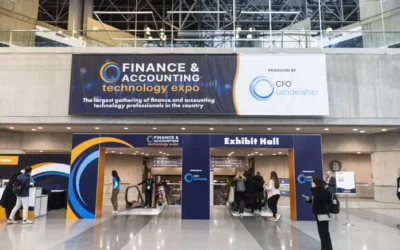Last December, CFO.com reported that nearly two-thirds of employees said, “Bah! Humbug!” to the company holiday party. This year, according to new research, that mood has reversed.
According to a new report from ezCater that surveyed just over 1,000 full-time employees and 603 workplace decision makers found that companies appear to be moving past last year’s cost-cutting mindset and embracing in-person connection as part of their culture strategy. Eighty-two percent of full-time employees plan to attend their company’s holiday party in 2025, while more than half (51%) of decision-makers say they’re spending more than last year. Another 41% plan to spend about the same.
Holiday party budgets are also up 13% on average. While much of that can be attributed to inflation, some may reflect a return to looser recreational budgets after years of restraint. Data shows food and beverage spending rose 31% year over year to an average $59 per employee at the party.
While CFOs probably aren’t choosing the venue, playlist or menu, that kind of rebound in discretionary spending says a lot about corporate culture’s direction and its potential payoff if invested wisely.
Culture spending makes a comeback
The report found that nearly all (92%) company decision-makers are maintaining or increasing their holiday budgets compared with 2024. The surge follows several years of cultural caution, when remote work, rising travel costs and cost-cutting tactics dulled enthusiasm for in-person gatherings.
Now, 80% of employees say holiday parties are as or more important than ever for team bonding in hybrid or remote environments. Eighty-three percent believe these events help them form friendships with coworkers, and 55% say they look forward most to camaraderie and socializing.
Those are encouraging signs for CFOs tracking engagement and retention metrics. Where morale and belonging once dipped, participation appears to be climbing. That can serve as an early indicator of what some in corporate circles now call “cultural ROI.”
Food becomes a workforce barometer
The ezCater data points to one simple driver behind the holiday party revival: Food. More than alcohol or entertainment, attendance now comes down to what’s on the menu.
Half of employees say the menu influences whether they attend. Over three-quarters (77%) look forward to food more than any other element, and nearly all agree food drives social interaction (93%) and determines overall enjoyment (94%).
Even Gen Z and millennial employees, often painted as disengaged, are 26% more likely than older peers to say food and drink choices shape their decision to attend.
It’s not about formality or finding a menu that pleases everyone. The data shows buffets and flexibility are key. Almost two-thirds (64%) of workers prefer to select their own meal, and more than half (53%) of planners say they’ll serve buffet-style this year. This formal tone-down also carries over into attire, where nearly two-thirds (62%) say they prefer a casual dress code over anything business casual or theme-based or formal.
The findings highlight a clear workplace trend: Employees are more likely to participate when experiences feel personalized, informal and of decent quality. For finance leaders overseeing vendor selection and cost justification, these are the same factors that drive other human capital investments, from learning programs to office design.
Alcohol interest rises, bucking trends
Contrary to the growing number of headlines and CFO comments about declining alcohol use among younger people, interest in cocktails at the office party is actually rising. Three-quarters (75%) of employees want alcohol served, a 6% jump from ezCater’s data last year. Eighty-two percent of planners are comfortable offering it, likely reflecting growing confidence in employee responsibility around alcohol in workplace settings.
Despite the enthusiasm, 87% of employees say they avoid overindulging. Alcohol-related mishaps — HR’s worst nightmare — are rare, with 75% of planners saying they’ve never had a negative experience serving drinks.
For CFOs, that balance between experience and risk management mirrors a broader trend: Companies are reembracing celebration with looser purse strings, but still keeping guardrails in place.





